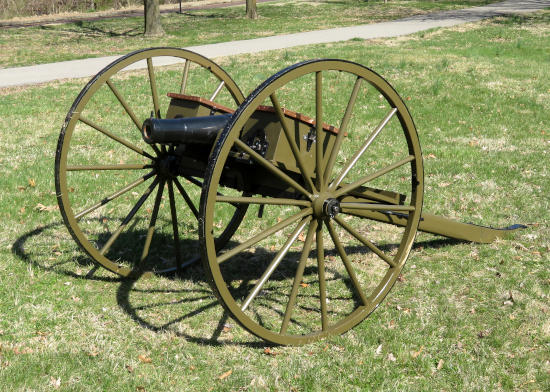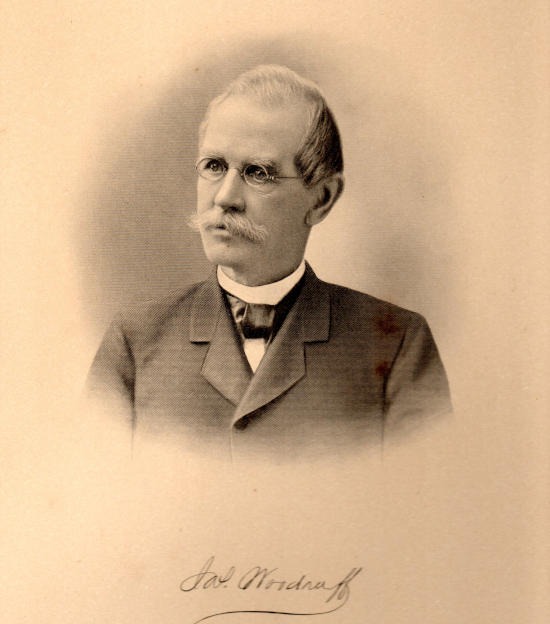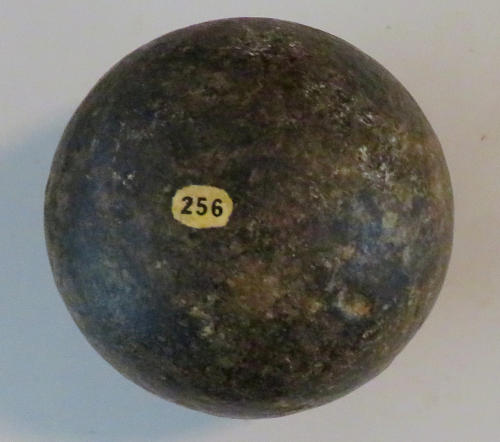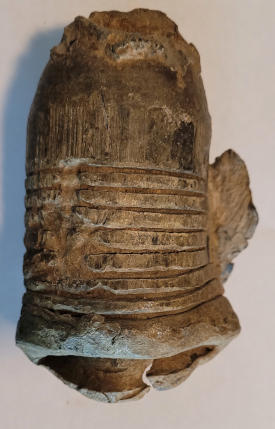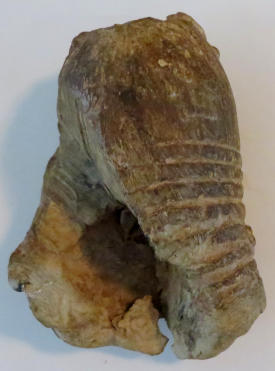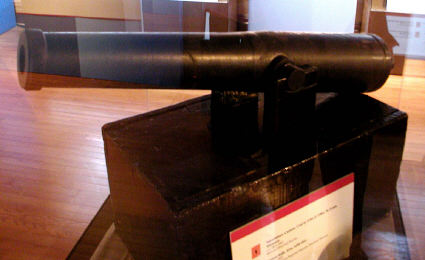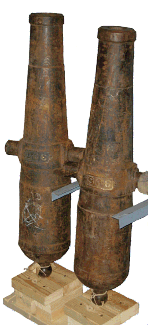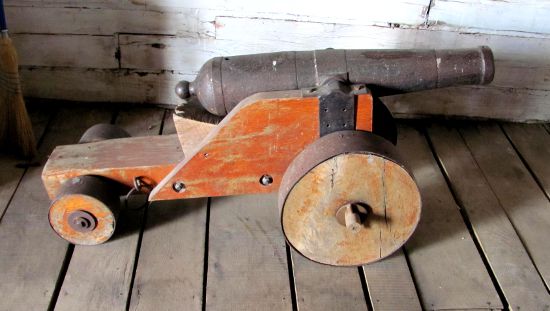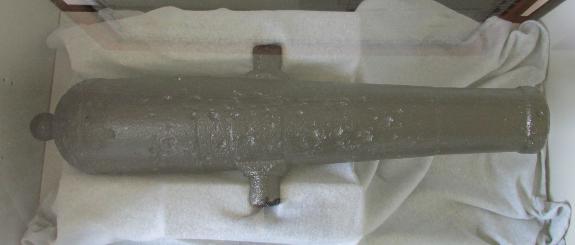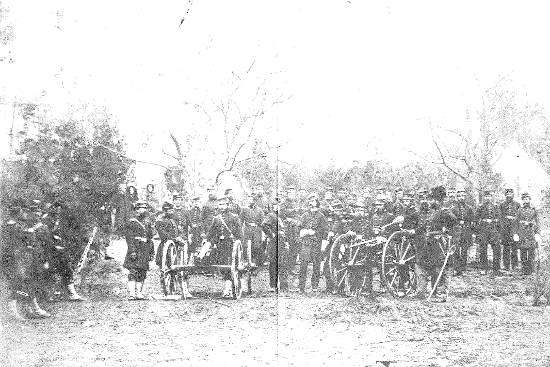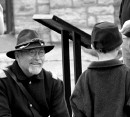The Woodruff Gun
Dr. John Margreiter’s 1973 Civil War Times Illustrated article supplemented by recent research by Randy Baehr.
“The Woodruff [gun] comes in the same category as the Ellsworth guns, the Billinghurst-Requa battery guns and the Sawyers, as much the lesser known [Civil War] pieces, that saw little service, and serve chiefly as stumbling blocks to idiots like me who try to write about them!”1James C. Hazlett to John Margreiter, 26 August 1965, John L. Margreiter Collection, Missouri Historical Society Archives, St. Louis, Mo.
So wrote James C. Hazlett, co-author of Field Artillery Weapons of the Civil War, one of the standard reference works on the subject, in a 1965 letter to Dr. John L. Margreiter, the foremost researcher of the Woodruff gun in the 20th century.
The work of Dr. John L. Margreiter is foundational to any research on the Woodruff gun. Margreiter’s article “The Woodruff Gun” appeared in the May 1973 issue of Civil War Times Illustrated and remained the definitive work on the subject for 50 years.2John Margreiter, “The Woodruff Gun”, Civil War Times Illustrated, Vol. 12, No. 2, May 1973: pp. 32-37.
In its January 1964 issue, Civil War Times published an article on the Battle of Pilot Knob by Dr. John Margreiter, professionally an anesthesiologist in suburban St. Louis. In the course of researching his article, Margreiter came across references to “Woodruff smoothbore guns” in the Official Records relating to Fort Davidson, the site of the 1864 battle in southeast Missouri. Unfamiliar with the guns, he began a systematic program of research to find out more. [Source]
In that pre-Internet age, he wrote letters—to the Aberdeen Proving Grounds; the American Ordnance Society; Ed Bearss, historian with the National Park Service; the State Historical Society of Missouri; the U.S. Army Field Artillery School at Fort Sill, Oklahoma; James C. Hazlett and Warren Ripley, authors of the standard works on Civil War artillery; the Historical Society of Quincy, Illinois; Sydney Kerksis of the Phoenix Press and a prominent military collector; Thomas Dickey, noted Civil War projectile collector; the National Archives; Harold Peterson, Chief Curator of the National Park Service; and Robert Fisch, curator of the West Point Museum.3Responses from these inquiries are all contained in the John L. Margreiter Collection, Missouri Historical Society Archives, St. Louis, Mo.
The response of Sydney Kerksis was typical: “…you know more about the Woodruff gun than I do. I have discussed this matter with Jim Hazlett and ‘Ned’ Julian and about all the three of us know is that they existed.” [Click here to see excerpts from some of the replies to Margreiter’s inquiries.]
By fall 1972, Margreiter had collected enough information for a proper article, which he submitted to Civil War Times. In October 1972, Editor William C. Davis replied:
“We have all had a chance to read it over, and are much impressed by your research and handling of the subject. We are happy to accept it, and enclose herewith our check for $60.00 in payment. I just checked Ripley’s ARTILLERY AND AMMUNITION [Artillery and Ammunition of the Civil War by Warren Ripley] and he has one sentence on the Woodruff guns, so I can see how sparse the information must have been.”4William C. Davis, Editor of Civil War Times, to John Margreiter, 6 October 1972, John L. Margreiter Collection, Missouri Historical Society Archives, St. Louis, Mo.
Published here with the permission of CIVIL WAR TIMES. This article originally appeared in the May 1973 issue of CIVIL WAR TIMES ILLUSTRATED. Annotations in italics in brackets by Randy Baehr. Some paragraphing has been changed to improve readability where comments have been added.
Little known, and perhaps even less liked, there are few more obscure Civil War weapons than…
The Woodruff Gun
By John R. Margreiter [CWTI used the wrong middle initial on this article.]
The Woodruff gun, sometimes referred to as a “steel two-pounder skirmish gun,” is one of the lesser-known fieldpieces of the Civil War. These miniature cannon rendered valuable service to the Union in Mississippi and several other locales of the Western theater, yet few are aware that they existed.
Their inventor, James Woodruff, was born in New Haven, Connecticut, February 26, 1821, and learned the carriage maker’s trade in Pittsfield, Massachusetts, during his teens. In October 1842, he moved to Quincy, Illinois, to work for an Eastern real estate firm with large holdings in that area, but eventually re-entered the carriage manufacturing trade as a partner in the firm of Hayes & Woodruff. Shortly after the outbreak of war this business was liquidated, and in September 1861 Woodruff began manufacturing knapsacks, haversacks, and ambulances for the Union forces. He was appointed assistant provost marshal for the Quincy Congressional District on October 30, 1862, and on May 7, 1863, was made provost marshal, only to resign the post in 1864.5See Collins, William H. and Perry, Cicero F. Past and Present of the City of Quincy and Adams County, Illinois, Chicago: The S. J. Clarke Publishing Company, 1905. p. 648.
https://archive.org/details/pastpresentofcit00coll/page/648/mode/2up?q=Woodruff
Also Portrait and Biographical Record of Adams County, Illinois, Chicago: Chapman Bros., 1892. p. 152.
http://livinghistoryofillinois.com/pdf_files/Portrait%20and%20biographical%20record%20of%20Adams%20County,%20Illinois,%201892.pdf
Sometime early in 1861 Woodruff designed a small fieldpiece6To say that Woodruff “designed a small fieldpiece” is probably an overstatement. Early reports in the Quincy newspapers on the Greenleaf Foundry work to produce a small cannon do not mention Woodruff’s name [see Woodruff Gun Chronology in the Quincy Press], and nothing in his background suggests that he had the knowledge or skills to design a functional artillery piece, although he had local contacts with those who did. It is unclear what his involvement in the project was at the earliest stages of development. Perhaps he was a financial backer of the prototype development. for use by cavalry and infantry, and on October 6, 1861, submitted the following proposal to Brigadier General James W. Ripley, Chief of Ordnance, U.S. Army:
Woodruff returned to Illinois, having learned in the meantime that there were 1,500 Navy revolvers (apparently Colts) in Whitneyville, Connecticut, and that a Mr. Gwynn of Dayton, Ohio, had 1,500 carbines (apparently the Cosmopolitan) which had been refused by the Ordnance Department. These facts were reported to Governor Yates, who then urged Woodruff to return to Washington and seek an audience with the President. Woodruff followed this advice, shrewdly taking along General Ripley’s original adverse report on the cannon. The inventor apparently championed his own cause as well as that of the regiment forming at Shawneetown, for Lincoln directed him to go see Lieutenant General Winfield Scott and gave him a memorandum (written on the wrapper of Ripley’s refusal of the cannon) which read: “Will Lt. Gen. Scott please see Mr. Jas. Woodruff, and in consideration of all the grounds say whether he would advise the purchase of the guns as proposed?” Gen. Scott’s staff would not allow the inventor to see the general personally, but instead sent Lincoln’s memorandum in to Scott’s office. The verdict was again adverse, General Scott’s reply stating, “I concur fully with Brigadier General Ripley in the opinion he has expressed within on this subject.”
Woodruff returned to the White House and was again received by the President. After some rather strong conversation, Lincoln wrote a note and told him to deliver it in person to General Ripley. [Click here to read Lincoln’s letter to Ripley.] Upon reading this communication Ripley’s attitude immediately changed to one of friendliness and cooperation, since the President had ordered the equipping of the Shawneetown regiment and the purchase of some Woodruff guns. Upon learning of the availability of the Navy revolvers and Gwynn’s carbines, the general asked Woodruff if he would go to Whitneyville, Connecticut, see that the handguns were shipped to Illinois, and try to locate Mr. Gwynn. Woodruff readily assented to the first request, and promised to attempt to find the carbine manufacturer.
By coincidence the two men met that evening in the lobby of Willard’s Hotel, and Woodruff told Gwynn to call again on General Ripley. On December 23, 1861, the Ordnance Department placed an order for 1,140 Cosmopolitan carbines, the actual number that Gwynn had on hand and more than enough to equip the regiment in Shawneetown. Woodruff was thus instrumental in the mustering and equipping of this unit, which eventually became the 6th Illinois Cavalry. Meanwhile, both Governor Yates and Senator Orville Hickman Browning pressured Lincoln to purchase some Woodruff guns; the shrewd Yankee from Connecticut left few strings unpulled. [Click here to read letters in support of Woodruff’s proposal.]
[The source for this account of Woodruff’s promotional efforts in Washington is most likely an article from the Quincy Herald-Whig, “From Quincy’s past: Civil War cannon were made here” , written by Carl Landrum and published on 3 October 1971. Landrum stated in the article that he had been in contact with Margreiter. Landrum quoted extensively from a “story that appeared in the Quincy Weekly Record of July 16, 1898 entitled ‘Reminiscences of Grant, Lincoln, Scott, and Other Notables of History’ by Captain James R. Woodruff.” Many of the events Margreiter relates are covered in this reprint, although the encounter between Woodruff and Gwynn at Willard’s Hotel is missing. A copy of the original Weekly Record article has not yet been located. The photo illustration accompanying the Landrum article is of a Wiard 6-pounder, which is not at all similar to a Woodruff gun except that it was also an unusual, nonstandard carriage design.]
Thirty Woodruff cannon were ordered on November 15, 1861, and delivered February 1, 1862. [Click here to see the contract.] On March 19, 1862, Woodruff received $8,550.00 (or $285.00 per gun), the sum indicating that they were smoothbores equipped for cavalry. These weapons were manufactured entirely in Quincy, the barrels by the Greenleaf Foundry and the carriages by Battel & Boyd. The city of Quincy bought an additional six guns for municipal defense purposes. [For insight into why a northern Illinois town would think it would need to provide for municipal defense, click here.] These were delivered February 7, 1862, and this apparently was the end of production. [Click here for documents relating to the City of Quincy’s acquisition of six Woodruff guns for municipal defense.]
[I now believe that the 36 guns Margreiter identified represent the total confirmable production of Woodruff guns. See the accompanying article Researching the Woodruff Carriage for the new information that led to the reversal of my earlier assertion that more than 36 guns were produced. See also the 1861 news article
“Doing Good Service” for another possible sale, not yet confirmed.]
[Gen. Samuel Curtis expressed an interest in using Woodruff guns for railroad bridge defense in Missouri in a letter to the St. Louis District Headquarters, although apparently nothing came of the proposal.]
The source of ammunition for these guns remains a mystery, although it is certain that they used only solid shot and canister. Sydney C. Kerksis, noted Civil War field artillery expert, stated in a personal communication:
“There are Government records for the purchase of all artillery projectiles during the war, which are very detailed, including even such purchases as 15 rounds of an experimental calibre. There is absolutely nothing regarding the purchase of any projectile of a size that could fit the Woodruff, either in conical or spherical format. As there is no doubt the guns existed and were used, I have come to the conclusion that they were smoothbore, as you say, and used as a projectile a grape shot. This is quite logical. The regulation size of grape shot (not canister) for the work horse of the war, the 12-pounder, was 2.02-2.06 inches and 1.14 pounds, so presuming that the guns were, as Woodruff proposed, of 2.125 calibre, a 12-pounder grape shot would fit nicely. If a bit larger, as I suspect they were, an 18-pounder would fit.”
[Finds in the 1980s indicate that all the Woodruff shot were made of lead.]
[As Woodruff noted in his proposal, the Woodruff gun fired a solid shot and a canister round only. The two-and-an-eighth-inch bore was too small for any kind of exploding round, like shell or spherical case. Ordnance returns for Battery K, 1st Illinois Light Artillery, list only “solid shot fixed” and “canister” for the Woodruff. [Source] Margreiter’s inquiries yielded the suggestion that the solid shot was a single iron ball from a 12-pounder grapeshot round, which would have weighed 1.14 pounds and fit the bore nicely.8Sydney Kerksis to John Margreiter, 25 March 1968, John L. Margreiter Collection, Missouri Historical Society Archives, St. Louis, Mo, quoted in John Margreiter, “The Woodruff Gun”, Civil War Times Illustrated, 12, 2, May 1973: 34-35. However, since his article, noted projectile collector Thomas Dickey found two types of solid shot and remains of a canister matching that described by Woodruff. All the shot found were made of lead.9Thomas S. Dickey, “Evidence Shows That Woodruff Gun Used A Conical Projectile”, The Muzzleloading Artilleryman, 6, 2, Spring 1985: 26-27. Examples of each can now be seen in the Dickey Collection display at the Atlanta History Center in Georgia.
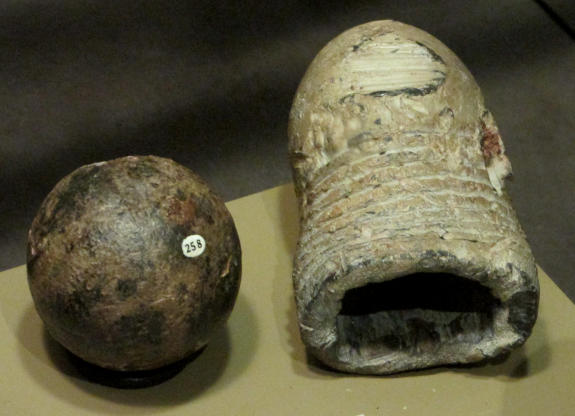
Two types of Woodruff lead solid shot are displayed in the Thomas Dickey Collection at the Atlanta History Center. Author’s photo.
This solid lead ball was found at Grierson’s camp in Baton Rouge, Louisiana, and is in the Thomas Dickey Collection on display at the Atlanta History Center. It shows impressions where the tin straps held it onto the wooden sabot. It is 2.06” in diameter and weighs 1.8 lb.10Jack W. Melton, Jr., “Thomas Swift Dickey Sr. ‘Baby’ Projectile Collection”, The Artilleryman Magazine, 42, 3, Summer 2021: 46.
A second ball, also originally from Dickey but now in a private collection, is also from Baton Rouge. It weighs 1 lb. 14 oz.11Author’s photo. Author’s measurement, from the collection of Charles and John Berry.
Two more balls in a private collection in Arkansas show weights about 1 lb. 13 oz.12Photos and measurements by Riley Bryant, provided by email of 12 July 2024 These were recovered from Helena, AR. The owner confirms that both ball show impressions from crossed sabot straps like the Dickey shot.
Other examples were on display at the Helena Museum of Phillips County in Helena, Arkansas.13Author’s photo. Personal visit to the Helena Museum of Phillips County in Helena, Ark., 25 August 2016. These shot were on loan to the museum and have since been returned to their owner, so they are no longer on display. Several of these show deformities due to impact. These were found nearly three-quarters of a mile from where they were fired.14On 26 August 2016, Ronald Kelley, of the Delta Cultural Center in Helena, Ark., showed me the firing position of the 1st Indiana’s Woodruffs on the levee and the impact area in what is now the Maple Hill Cemetery. Using GPS coordinates, I calculated the distance at about 1250 yards.
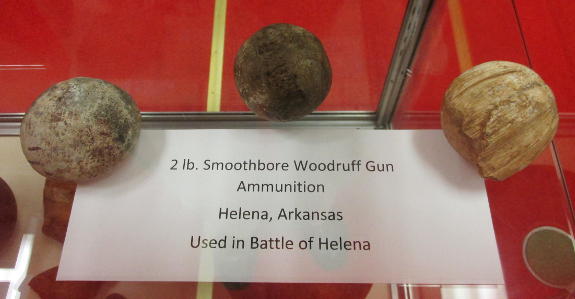
Three round lead Woodruff shot fired during the Battle of Helena, AR, July 4, 1863. Note the deformation of the shot, especially the one on the right. These are on display in the Helena/Phillips County Museum in Helena, AR. Author’s photo.
Additional Woodruff shot from Helena are held by the Delta Cultural Center there.15Author’s photo
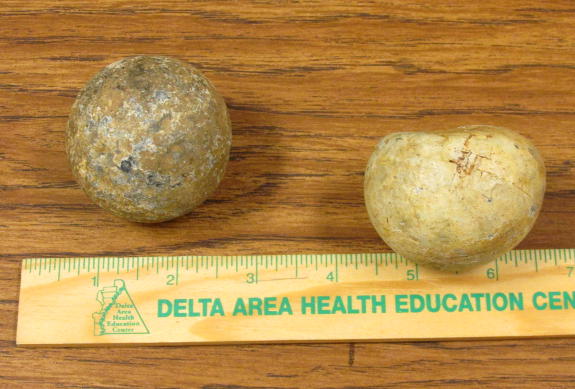
Two round lead Woodruff shot fired during the Battle of Helena, AR, July 4, 1863. Note the deformation of the shot on the right. These are in the collection of the Delta Cultural Center in Helena, AR. Author’s photo.
A ball attached toa sabot was offered on an auction site in 2009. It had a single brass strap instead of two narrower crossed straps indicated by the Dickey example.16Seen on the Heritage Auction website, https://historical.ha.com/itm/military-and-patriotic/civil-war/most-rare-2-two-pound-spherical-lead-ball-on-the-original-wood-sabot-for-the-woodruff-gun/a/6021-57346.s; Internet; accessed 16 November 2022 and earlier. The same item was offered on Bidsquare by Amoskeag Auction Company at https://www.bidsquare.com/online-auctions/amoskeag-auction-company/very-rare-woodruff-gun-two-pound-spherical-lead-shot-with-original-wooden-sabot-1217318; Internet; accessed 16 November 2022. Jack Melton, editor of The Artilleryman Magazine, has noted that the patina on this lead ball indicates that it had been excavated, so this particular assemblage is not original.17Jack Melton to the author, email 21 January 2024.
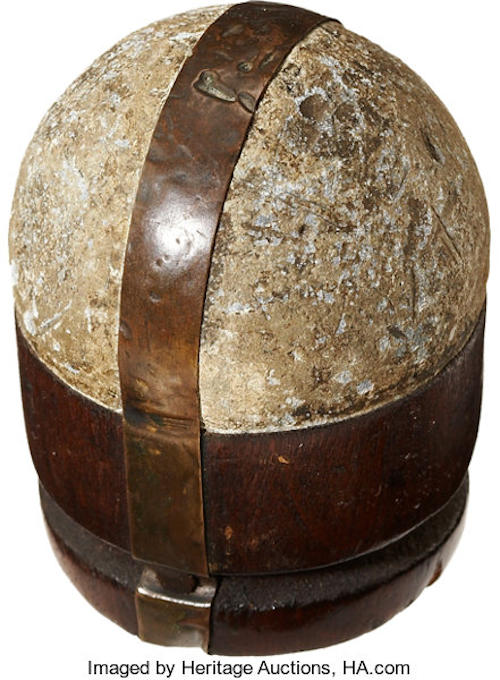
Woodruff round shot on sabot.
Seen on the Heritage Auction website, https://historical.ha.com/itm/military-and-patriotic/civil-war/most-rare-2-two-pound-spherical-lead-ball-on-the-original-wood-sabot-for-the-woodruff-gun/a/6021-57346.s
The canister round remains show only one layer of seven .69 caliber, 1-ounce musket balls of the 42 that Woodruff said the round contained.18Jack W. Melton, Jr., “Thomas Swift Dickey Sr. ‘Baby’ Projectile Collection”, The Artilleryman Magazine, 42, 3, Summer 2021: 17. The example was found at Grierson’s camp in Baton Rouge, Louisiana.]
However, since this was written several years ago, evidence that fixed ammunition was used has been found. In the Official Records (Series I, Volume XXXIV, Part III, p. 165) two April 15, 1864, messages appear from Lieutenant Colonel John N. Herder, commanding the post at Pilot Knob, Missouri, to Brigadier General Thomas Ewing, St. Louis Military District. They say in part:
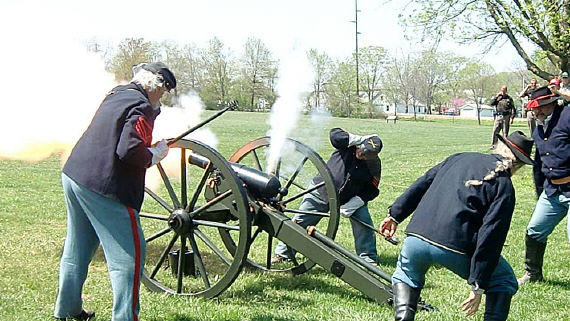
A Company M crew fires the Fort Davidson State Historic Site’s new Woodruff replica during the Turner Brigade Spring Drill in Pilot Knob, MO, in 2010. This replica was constructed before we knew what a Woodruff carriage really looked like. This carriage is a First Model Prairie carriage, scaled up to have 4-foot wheels as Woodruff specified.
[This second type of solid shot was found only at Pilot Knob, Missouri, along with the round type. 19Jack W. Melton, Jr., “Thomas Swift Dickey Sr. ‘Baby’ Projectile Collection”, The Artilleryman Magazine, 42, 3, Summer 2021: 47. Also Thomas S. Dickey, “Evidence Shows That Woodruff Gun Used A Conical Projectile”, The Muzzleloading Artilleryman, 6, 2, Spring 1985: 27. Also photo by Jack Mayes with notations by John Margreiter on the back, John L. Margreiter Collection, Missouri Historical Society Archives, St. Louis, Mo. This lead conical shot is basically a large Minié ball, with a deep hollow base and rings. The example shown in the photo above with the round shot at the Atlanta History Center is the most intact yet found and is reported to weigh 2.8 lb.
Another example, also found at Pilot Knob but missing a piece of the skirt, weighs 3 lbs. 6¼ oz., and a 3D rendering based on the dimensions of the Dickey Collection example gives a weight in lead of 3 lbs. 7.7 oz., consistent with the second example.20Weight of the example in the Dickey Collection at the Atlanta History Center from Thomas S. Dickey, “Evidence Shows That Woodruff Gun Used A Conical Projectile”: 26-27. Also reported in Jack W. Melton, Jr., “Thomas Swift Dickey Sr. ‘Baby’ Projectile Collection”, 47. Weight of the second example from author’s measurement of shot in the personal collection of Charles and John Berry. Calculated weight of 3D rendering from Brent Wissel, St. Louis Restoration, in email to the author, 17 October 2022.
The date when the 3d MSM received this type of shot can be closely determined by the Herder communication of April 15, 1864, that Margreiter cites above.
I believe this conical shot was a type originally produced for a different gun of the same caliber, a gun manufactured in St. Louis known as the Filley, named for the St. Louis industrialist who had them made, Giles F. Filley. He had 30 small 2 1/8-inch bore guns made in 1861 and donated the surviving example to the Missouri Historical Society in 1898.
His handwritten donation note included the following:
“They carried a lead conical ball weighing about four pounds. The balls were grooved and wrapped with woolen yarn.” 21Giles F. Filley to the Missouri Historical Society, 1 March 1898, Filley Family Papers, Missouri Historical Society Archives, St. Louis, Mo.
This corresponds with the surviving examples. Filley noted that half of his tubes were rifled, so the hollow-base lead shot makes sense for those.
Since the conical lead shot was already being produced in St. Louis for the Filley cannon, the St. Louis Arsenal surely sent Herder what it already had on hand. However, the presumption has been that all Woodruff ammunition always came from the St. Louis Arsenal, even the spherical type, so it is unclear why they would have shipped the conical shot at that time.
Margreiter’s assertion that the conical rounds were “fixed”, i.e., the powder bag was physically attached to the shot, is probably not true. While the round shot with the sabot, as indicated by the strap impressions on surviving examples, was certainly fixed in the same manner as round shot for larger caliber guns was prepared, the conical shot shows no evidence of a place where a sabot would have been attached nor would there have been clearance enough for the powder bag to have been attached directly to the base of the shot. Solid shot for larger caliber rifled guns were not fixed, the powder charges being separate from the shot. This was no doubt the case for these lead conical shot as well.
Click here for a discussion of the mathematics attempting to derive the 1½-inch difference in height cited in the Herder correspondence.]
The Woodruffs, as with all weapons, were praised by some troops and deprecated by others. The history of the 4th Iowa Cavalry, Story of a Cavalry Regiment-The Career of the 4th Iowa Veteran Volunteers from Kansas to Georgia, 1861-1865 mentions these guns in several places, but never in praise. “The Woodruff guns were three small iron pieces, throwing a two-pound solid shot, which about this time in some way came into the hands of the regiment. They were placed in charge of Private ‘Cy’ Washburn of ‘B’ Company, who had a few men detailed to assist him. They were of no value, and were generally voted a nuisance. They were never known to hit anything, and never served any useful purpose, except in promoting cheerfulness in the regiment. The men were never tired of making jokes and teasing Washburn about them; but he was proud of his artillery, and thirsted for an opportunity to justify its existence. When the regiment left Helena he was not permitted to take it along with him.” Washburn was later captured during the Vicksburg Campaign.22Wm. Forse Scott, The Story of a Cavalry Regiment: The Career of the Fourth Iowa Veteran Volunteers, from Kansas to Georgia, 1861-1865. New York: G. P. Putnam’s Sons, 1893: 62.
On the other hand, in Pilot Knob, Thermopylae of the West, Sergeant J.C. Steakley, 3rd Missouri State Militia Cavalry, says: “Co. ‘K’ had been in charge of a battery of light artillery, consisting of four two-pounder Woodruff guns and two twelve-pounder brass mountain howitzers, and I believe I do not exaggerate when I say that nearly every man, commissioned officers and privates, could have hit a target the size of a man’s body every shot at a quarter of a mile with those Woodruff guns.”23Cyrus A.Peterson and Joseph Mills Hanson, Pilot Knob: The Thermopylae of the West. New York: The Neale Publishing Co., 1914: 151. These four Woodruffs were not used in the battle of Pilot Knob, but were listed in the Confederate report of equipment captured there.
Another 2-pounder (apparently a Woodruff) was captured in the rout of a detachment of the 4th Iowa Cavalry (evidently some of Private Washburn’s artillery was re-issued) near Birdsong’s Ferry (Big Black River), Mississippi, on June 22, 1863. [This is incorrect. The 4th Iowa’s history states: “Washburn and his gun were taken. He would not leave it; but two of his gunners, Eli Allen and Henry Black, both of E, took the heavy breech-pin out of the gun (it was a breech-loader) and carried it for some distance as they ran, finally concealing it in the ravine.”24Wm. Forse Scott, The Story of a Cavalry Regiment: The Career of the Fourth Iowa Veteran Volunteers, from Kansas to Georgia, 1861-1865. New York: G. P. Putnam’s Sons, 1893: 105. This “breech-loader” is now generally believed to be a Hughes gun. 25Jeff T. Giambrone, “The Hughes Breechloading Cannon and its Use During the 1863 Vicksburg Campaign”, The Artilleryman Magazine, 43, 3, Summer 2022: 28-39. The history makes no further note of Woodruff guns being used by the 4th Iowa Cavalry.]
No instance of Confederate use of captured Woodruff guns has been found to date. [A couple of instances of Confederate capture of Woodruff guns are documented (Clark’s Mill, MO; Vincent’s Crossroads, AL; Pilot Knob, MO–See list of battles below). The only account of the captured guns actually being used was at Trading Post, KS, when Union forces in pursuit of Price’s army recaptured them. Sources]
No report of the use of Woodruffs by the 6th Illinois Cavalry has been found, but several sources document the fact that Battery K, 1st Illinois Light Artillery, had six of these guns and that they operated frequently with the 6th Cavalry. D. Alexander Brown’s Grierson’s Raid (Urbana, Ill. 1954) has many references to the use of these guns by that battery during the celebrated cavalry operation, and it is quite obvious that these small pieces made a definite contribution to its success.26D. Alexander Brown, Grierson’s Raid, Urbana, IL, University of Illinois Press, 1954. For a more recent account of Grierson’s Raid, also with references to the Woodruff gun, see: Timothy B. Smith, The Real Horse Soldiers: Benjamin Grierson’s Epic 1863 Civil War Raid Through Mississippi. El Dorado Hills, CA, Savas Beatie, 2020. Among those citing them in after-action reports on the raid was Colonel Edward Hatch, 2nd Iowa Cavalry. Among the many articles written about Grierson’s raid is one by Lieutenant Colonel S. L. Woodward, 6th Illinois Cavalry [sic: 7th Illinois Cavalry] (The Journal of the U.S. Cavalry Association, April 1904), in which he relates that in order to cross one swamp the artillery ammunition was taken from the limber boxes and distributed among the men to be carried on their horses; this again would indicate the use of fixed ammunition.
[Perhaps the best-known action in which Woodruff guns participated is Union Col. Benjamin Grierson’s 1863 raid through Mississippi from LaGrange, TN, to Baton Rouge, LA, during April and May of 1863. Six Woodruffs of Battery K, 1st Illinois Light Artillery, accompanied the 6th and 7th Illinois Cavalry and 2d Iowa Cavalry on this raid. Grierson’s intent was to move quickly and avoid any large-scale engagements, and the Woodruff guns would have been light enough to be able to keep up with the fast-moving cavalry but impressive enough to intimidate any local home guard units they might encounter. This generally proved to be the case, as the raiders fortunately never engaged enemy forces with any artillery of their own, and often the guns proved their worth in helping to hold off an otherwise determined opponent. However, the construction of the Woodruff carriages, especially the wheels, proved not to be up to the rigors of the campaign.27Lt. Col. S. L. Woodward, “Grierson’s Raid, April 17th to May 2d, 1863”, Journal of the United States Cavalry Association, 14, 52, April 1904: 686.
S. L. Woodward of the 7th Illinois, writing in the Journal of the United States Cavalry Association in 1904, described the battery as it entered Baton Rouge at the end of the raid:
Also Michael J. Martin, A History of the 4th Wisconsin Infantry and Cavalry in the Civil War. New York: Savas Beatie, 2006: pp. 175, 180, 181.
George W. Peck worked as a printer in Wisconsin when he enlisted in the Union army in 1864. He was assigned to be a replacement in the 4th Wisconsin Cavalry, then serving in Louisiana. After the war, Peck became a newspaper publisher and author, notably of a series of books about Peck’s Bad Boy. Among his works is a reminiscence of his more humorous experiences in the war, called How Private Geo. W. Peck Put Down the Rebellion. On page 82, he describes his regiment getting ready to move: “But finally everything was ready, the ammunition wagons, wagon train of stores, and a battery of little guns, about three pounders, had been added. I didn’t like the battery. It seemed to me hard enough to kill our fellow citizens with revolver balls, without shooting them with cannon.” These guns no doubt belonged to Battery K, 1st Illinois Light Artillery, which operated in the same brigade with the 4th Wisconsin Cavalry during operations around Port Hudson.
George W. Peck, How Private Geo. W. Peck Put Down the Rebellion. Chicago: Thompson & Thomas, 1887: 82.
At the end of 1863, the battery had eight Woodruffs while stationed at Germantown, Tennessee.[Source]
[Woodruff guns are only known to have been used in the Civil War’s Western Theater, and they were primarily issued to cavalry units. The only volunteer artillery unit showing Woodruff guns in their ordnance returns is the aforementioned Battery K of the 1st Illinois Light Artillery, which apparently received eight of the guns originally intended for the Illinois volunteer unit that Woodruff helped arm. These do not appear in their returns after the end of 1863. [Source]
Ordnance issuance abstracts also show six Woodruffs issued to the 1st Battery of Artillery, Missouri State Militia, in St. Joseph in April 1862. A year later that unit was reassigned to be a company of the 1st Missouri State Militia Cavalry. [Source] I have not yet found records for whether they retained the guns after that transfer.
Woodruff guns are known to have been used in:
- the Battle of Kirksville, Missouri, by a section of the 1st Battery of Artillery, Missouri State Militia, August 6, 1862; (Click here for OR excerpt)
- the Battle of Clark’s Mill, near Vera Cruz, Missouri, by the 10th Illinois Cavalry, November 7, 1862; (Click here for OR excerpt)
- the Battle of Prairie Grove, Arkansas, by the 10th Illinois Cavalry, December 7, 1862; (Click here for OR excerpt)
- the Battle of Helena, Arkansas, by the 1st Indiana Cavalry, July 4, 1863; (Click here for OR excerpts)
- and the Battle of Vincent’s Crossroads, near Bay Springs, Mississippi, by the 1st Alabama Cavalry (U.S.), October 26, 1863. (Click here for OR excerpts)
Besides these, as Margreiter noted, the 4th Iowa Cavalry fielded three Woodruff guns until May 1863, using them in skirmishes near Helena, Arkansas.31Wm. Forse Scott, The Story of a Cavalry Regiment: The Career of the Fourth Iowa Veteran Volunteers, from Kansas to Georgia, 1861-1865. New York: G. P. Putnam’s Sons, 1893: 62.
While temporarily stationed at Fort Davidson at Pilot Knob, Missouri, in May 1863, the 10th Illinois swapped their Woodruff guns for two bronze mountain howitzers of the 3d Missouri State Militia (MSM) Cavalry. [Source] Records are unclear as to exactly how many Woodruffs were at Fort Davidson after this swap. The St. Louis Arsenal issued two more Woodruffs to the 3d MSM in November 1863. [Source] While present during the September 1864 Battle of Pilot Knob, the 3d MSM’s Woodruff guns are generally not believed to have been used, although one Confederate report states they were (Click here for a discussion of whether Woodruff guns were in action at the Battle of Pilot Knob), and six were recorded by the Confederates as captured after the battle. (Click here for a discussion of how many Woodruff guns were captured after the Battle of Pilot Knob.) The Confederates took two with them in their raid across the state of Missouri and lost them both to recapture in a battle at Trading Post, Kansas, on 25 October 1864. One was officially awarded to the 2d Arkansas Cavalry, U.S., which had seized it, but the unit apparently never received possession since another unit was said to have stolen it. The disposition of the other Woodruff, captured by Battery H, 2d Missouri Light Artillery, is unknown. [Sources]
The Fort Davidson swap and other documentation indicate that Woodruff guns were generally not highly regarded by their operators and were often shifted from unit to unit. The 4th Iowa’s Woodruffs were left in Helena, Arkansas, when the unit departed to join the Vicksburg campaign. 32Wm. Forse Scott, The Story of a Cavalry Regiment: The Career of the Fourth Iowa Veteran Volunteers, from Kansas to Georgia, 1861-1865. New York: G. P. Putnam’s Sons, 1893: 62. These were probably the same guns operated by the 1st Indiana during the Battle of Helena on July 4, 1863, and at least one apparently remained in Helena into mid-1864.33An 1864 photo shows a Woodruff gun on a raft during the Helena flood. See the discussion of this photo below. Since most Woodruff guns were assigned to cavalry units, the men assigned to them may not have been happy about having to serve them.
So a Woodruff gun’s optimal deployment was against a small enemy force that had no artillery, where even a cannon as small as a Woodruff would be sufficient to intimidate. Grierson’s raid was a prime example, as was the Missouri State Militia’s mission of suppressing guerrillas in Missouri.
Troops going up against a substantial enemy force, especially with its own artillery, wanted something more powerful, as a Woodruff would have been next to useless by itself. This uselessness was demonstrated when Confederates with four 6-pounders captured two Woodruffs from the 10th Illinois Cavalry at the Battle of Clark’s Mill, [Source] and when a Confederate force, without artillery but with four times the numbers of the 1st Alabama Cavalry, captured two Woodruffs at the Battle of Vincent’s Crossroads. [Source]
A postwar report to the Joint Committee on Ordnance of the 40th Congress, 2d Session, 1868, listed all the ordnance on hand with the U.S. military at that time. Under the heading “Experimental patterns―Field guns and howitzers”, an entry listed 11 Woodruff guns held at armories and arsenals. Oddly, they are grouped under the “Rifled guns” heading. In the “Artillery Carriages” section, under “Experimental patterns”, there is a listing entry for Woodruff gun carriages, but no quantity is given, only ellipses. No ammunition identified as Woodruff rounds or of its caliber is listed in the “Artillery Projectiles” sections. If any was on hand, it must have been included in the “Assorted” entries.34House Documents. United States: U.S. Government Printing Office, 1868. 40th Congress, 2d Session, Miscellaneous Documents, No. 152. “Ordnance and ordnance stores, statement submitted by Mr. Butler of Massachusetts, June 23, 1868”: pp. 4,10. Internet, accessed 6 Mar 2023. https://www.google.com/books/edition/House_Documents/NnJXAAAAcAAJ?hl=en&gbpv=1&q=40TH+CONGRESS+2D+SESSION+HOUSE+OF+REPRESENTATIVES+MIS.+DOC.+NO+152&pg=RA17-PA1&printsec=frontcover. Thanks to CMH member Paul Rosewitz of Bethalto, Ill., for this reference.]
The only Woodruffs known today repose in the collection of the West Point Museum. Mr. Robert W. Fisch, curator, reports that the only markings on these specimens are the number “412” on one and “413” on the other. [Curiously, the photograph on the first page of the article as originally published shows tube number 397. The discrepancy has to do with the museum’s renumbering of its catalog over time. The number plates are museum identification devices, not original to the pieces.] Number 412 was received by the museum on February 3, 1869, from Brevet Brigadier General F. D. Callender of St. Louis, Missouri, while 413 arrived at the Museum January 2, 1869, from P.M. and U.S.K. Washington Arsenal. Neither of these guns is on display at present. [Other West Point documentation says the Washington Arsenal gun was sent by Capt. F. Whyte. These two are by far in the best condition, having been housed indoors since their acquisition by the museum.35Robert W. Fisch, Museum Curator, West Point Museum, to John L. Margreiter, 23 June 1972, John L. Margreiter Collection, Missouri Historical Society Archives, St. Louis, Mo.
By the 1990s, two more original Woodruff tubes were identified, both in private hands. Ralph Lovett, an artillery collector in Georgia, owns one first acquired by his late father Leon Lovett.36https://www.lovettartillery.com/Woodruff_Gun_American_Civil_War.html, and personal correspondence to the author from Leon Lovett, ca. 2002. The other is owned by a private individual in southwest Missouri, who had it on loan to the Sweeny Museum near the Wilson’s Creek National Battlefield for a number of years until that private museum was acquired by the park. While it was there, a reenactor unit from St. Louis took the dimensions of it and had a replica made in 1993 for competition firing. In 2002, a colleague and I purchased this replica from the unit when that group disbanded.37Documentation included in the author’s purchase from Battery I, 1st Missouri Light Artillery, a reenacting group now disbanded.
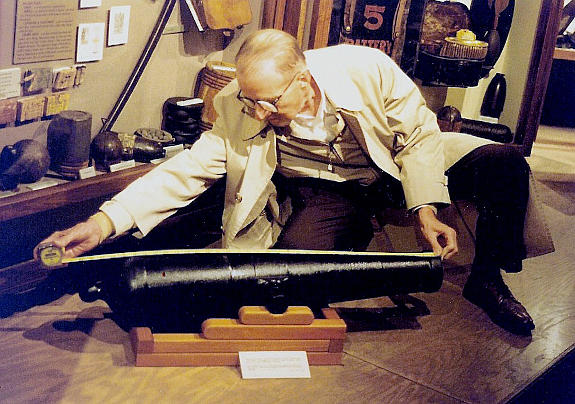
Hal Hamilton of Battery I, 1st Missouri Light Artillery, measures the Woodruff tube on display at the Sweeny Museum in Republic, Mo., in preparation for having a replica made.
Photo from Battery I, 1st Missouri Light Artillery, author’s collection, ca. 1993.
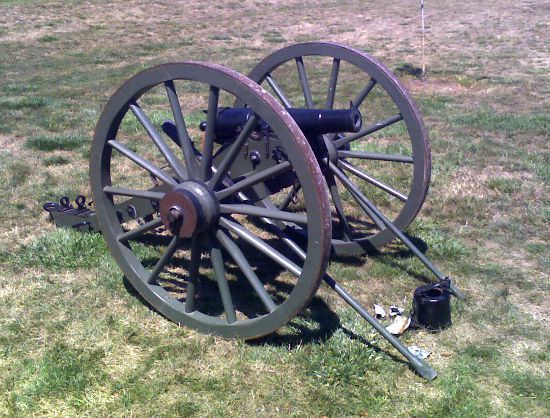
Company M’s Woodruff gun replica, on the carriage as originally purchased from Battery I, at the 2012 Kirksville event. Author’s photo.
Three other original Woodruff tubes are now known, one in White Hall, Illinois, one at Old Fort Madison in Fort Madison, Iowa, and one in New York at the lighthouse museum at Golden Hill State Park on Lake Ontario.
Around 1990, a group in Fort Madison, Iowa, began a project to build a replica of Old Fort Madison, a stockade fort that stood between 1808 and 1813. They purchased a small cannon tube at a farm auction across the Mississippi River in Illinois, not knowing what it was, in the hope that it might have been from the original fort. It was much later that it was identified as a Woodruff gun. It can be seen mounted on a naval-style carriage in one of the replica barracks buildings.38Personal conversations with Eugene Watkins, Site Manager, Old Fort Madison, Fort Madison, Ia., 17 June 2021.
In 2005, my Woodruff co-owner attended a reenactment in White Hall, Illinois, and noticed a small cannon in a city park in the center of town that appeared to him to be just like the one on his trailer. We confirmed this identity the next year. People in the town were unaware of what it was, although it had been in the park at least since the early part of the 20th century. Its exact provenance is still unknown.39Emails and personal conversations of the author with Terry Barnard of White Hall, Ill., 2019-2021.
In January 2008, Jim Bender, keeper of the National Register of Surviving Civil War Artillery, reported that the latest addition to the registry was a Woodruff tube found in shallow water in front of the Thirty Mile Point lighthouse at Golden Hill State Park, New York, on Lake Ontario. 40Jim Bender to the author and others, email 16 January 2008. It is believed to have been used as a signal gun at the light house until the fog horn building was built in the 1930s. It is unknown how the gun got there, since the lighthouse was not built until 1875. The tube has been professionally conserved and is now on display in a case in the lighthouse museum.41Heidi Miksch, “Object Conservation Treatment Report”, Waterford, N.Y.: New York State Office of Parks, Recreation and Historic Preservation, Bureau of Historic Sites, Peebles Island Resource Center, 2013. Also, author’s visit to Golden Hill State Park, N.Y., 2 July 2014.
[I now have seen six of the seven surviving tubes, and none have any discernible markings, except for the Fort Madison tube, which has only a roughly engraved capital F on the breech band. (Click here for my speculation about this marking.)
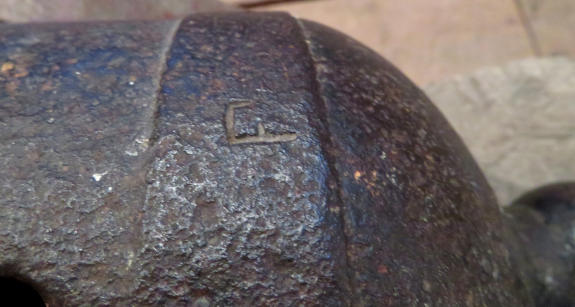
This photo shows the “F” engraved on the breech band of the Woodruff tube on display at Old Fort Madison in Fort Madison, Iowa. Author’s photo.
All are smoothbore, although the bore is blown out on the Missouri example, such that early on we thought it had been rifled. It is now believed to have been smoothbore. All surviving Woodruff tubes have a hole in the end of the cascabel where it was held in the lathe for turning the tube for finishing.
Woodruff’s proposal said that his guns would weigh 256 lbs. and be three feet long. One of the West Point Museum tubes and the one at Golden Hill State Park have reported weights of 234 lbs., while the other West Point tube is listed at 239 lbs. These are the only ones I know that have been weighed. One West Point gun is 36½ inches long. The Golden Hill tube was measured at 36 3/16 inches long, and I measured the Old Fort Madison tube at 36¼ inches long. The tube at the Sweeny Museum was 36 1/8 inches long. One West Point gun is 7 inches wide at the outsides of the rimbases. The Golden Hill tube and the Old Fort Madison tube are both 7¼ inches wide at the rimbases. The tube at the Sweeny Museum was 7 1/8 inches wide at the rimbases.]42Weights of the West Point tubes are from a Curatorial Historic Record from the West Point Museum provided by Les Jensen. Dimensions from a diagram of a Woodruff gun (West Point Museum #4337) done in 2006 provided by Les Jensen. Dimensions of the tube at the Sweeny Museum from measurements taken by Charles Berry in a diagram in his collection.
Dimensions of the Golden Hill State Park tube from Heidi Miksch, “Object Conservation Treatment Report”. Weight of the Golden Hill tube from Barbara Lawson, Golden Hill State Park, to the author, email 27 August 2021. Dimensions of the White Hall tube measured by the author 31 August 2021.
No documented contemporary photographs of these guns have come to light….
[In February 2013, Shawn Clark of Independence, MO, a visitor to this site, suggested that perhaps this photo showed a Woodruff gun instead of the “mounted howitzer” stated in the photo description. I do believe that the small gun in this photo is in fact a Woodruff gun. The carriage matches the documented description, as sparse as that documentation is, and Mr. Clark notes that Woodruff guns were known to have been stationed in Helena at the time the photo was taken. This would be the first period photo depicting a Woodruff gun and carriage known to exist.43Shawn Clark to the author, email 23 January 2013.
The photograph is from the album of Capt. Thomas Abel, 56th U. S. Colored Infantry, who was assigned post and garrison duties in Helena after the Battle of Helena on July 4, 1863. The image is online at http://www.civilwarvirtualmuseum.org/1863-1865/battles-of-helena-little-rock/helena-high-water-photo.php in the Trans-Mississippi Virtual Museum prepared by the Wilson’s Creek National Battlefield Foundation, the National Park Service, and the Springfield-Greene County Library District.
An interesting feature of the photograph are the shadows alongside the trail that clearly extend beyond the ends of the axle boxes. A visitor to this site, Mark Thomas, suggested that these shadows could be footrests for cannoneers riding the boxes. The 30 Woodruffs sold to the Army were all cavalry models with limbers. As noted above, Woodruff’s offer stated, “For mounted service or Flying Artillery to be used with 2 horses the Guns are mounted precisely the same as for Infantry, and have in addition a limber, with everything ready to attach the horses, and with 2 ammunition chests upon the limber on which 2 men can ride, as can also 2 other men on the chests on the gun axle.” I find this explanation persuasive.44Mark Thomas to the author, email 27 April 2015.]
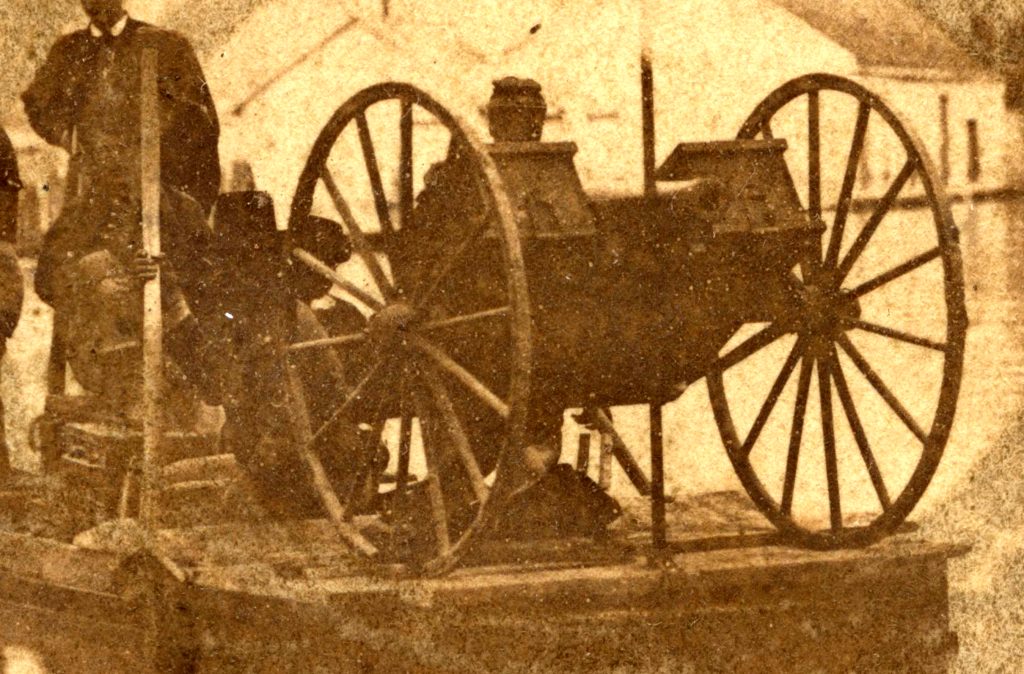
Detail of 1864 Woodruff photo showing the footboards beneath the ammunition boxes on the axles. Click the image to view enlarged version.
However, there is a photograph which shows the officers of the 96th Pennsylvania Infantry grouped around two small guns, and it appears that the piece on the left could be a Woodruff.
[This is doubtful; the carriage does not match the description of the ones Woodruff proposed–the wheels are apparently 42 inches, not 48 inches, judging from the length of the saber next to the gun, and there are no ammunition boxes on the axle. It’s difficult to judge the tube, since it is viewed muzzle-on, but it does seem to bear a resemblance to the Woodruff. A park ranger historian at the Springfield Arsenal in Springfield, MA, identified the left gun in this photo as a “miner gun”. Others have suggested that the left gun is one made by George Schalk of Pottsville Pa., “a superb gunsmith”, who made it for the 96th Pennsylvania Volunteers before they left for war.45See this thread on CivilWarTalk.com.]
History has relegated the Woodruff gun to an obscurity even greater than that suffered by little-known “oddball” pieces such as the Ellsworth, the Williams, the Hughes, and the Billinghurst-Requa. Only thirty-six existed and the majority never saw action, yet they and their inventor did indeed leave a fleeting mark on the pages of Civil War history.
[What prompted James Woodruff and Giles Filley to produce their small artillery pieces? No American artillery of that small a caliber had been in use for decades. Click here to see my speculation on why these two men may have been inspired to build these guns.]
Click here for the story of the research that resulted in the creation of a more authentic replica Woodruff carriage.
Click here for the event report on the 2024 Turner Brigade Spring Drill at Pilot Knob, MO, where four Woodruff guns, two replicas and two originals, were present for the debut of the historic site’s new authentic replica carriage for its replica Woodruff gun tube.
Click here for author’s acknowledgements of many of the people who contributed to this article.
Much of the information on this page and in the companion page “Researching the Woodruff Carriage” was also published in the Winter 2023 issue of Military Collector & Historian, the quarterly journal of the Company of Military Historians and again in the Spring 2024 issue of The Artilleryman Magazine.
If you have additional information about the Woodruff gun, contact:


